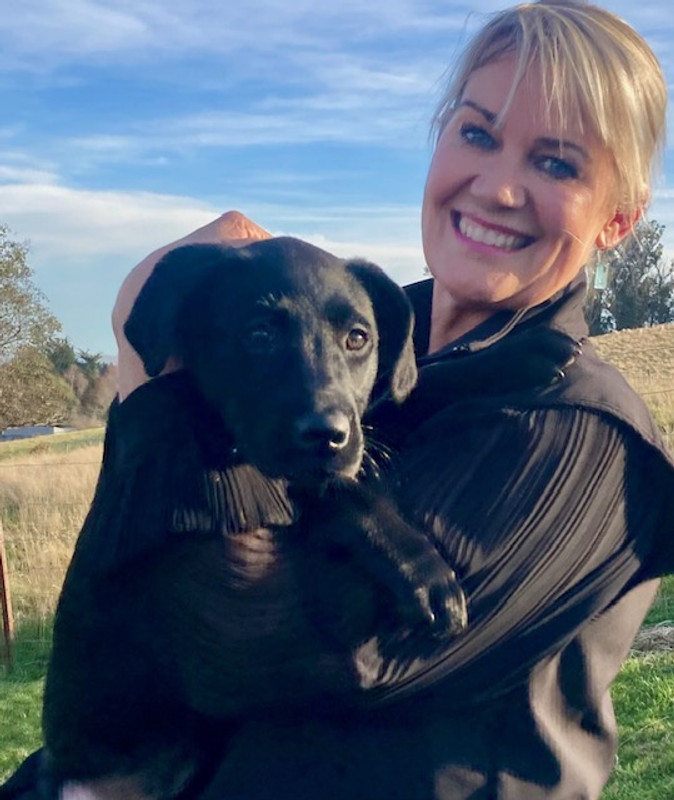Dog Blog Issue Eight
Child star shines bright
Skye is an absolute delight, with her plump little body, dreamy dark eyes and big soft paws. And she is really enjoying the limelight, spending time with K9MD’s Ambassador, broadcaster Melanie Kerr and her new pals at K9MD. Like any young apprentice, she has a lot to learn about living and working with her humans and a ready-made team of K9MD detection dogs. Luckily, teens Hogan and Hunter are on hand to show her the ropes. She’ll soon be getting that gorgeous nose into all sorts of adventures, and serious matters too, as she tries out for the K9MD detection team with some puppy-level scent training. With so much to learn, it’s amazing how much a little pup can retain. But it is certainly true that now is the best time for her to store new knowledge for future reference, and how she is trained now will set her up for a successful future. With that in mind, we’ve been exploring how dogs’ memories work, particularly when it comes to certain smells.
A la Récherche du Temps Perdu
At the risk of sounding obsessed with dog noses, the way K9MD’s canine team members store and recall memories of odours is another factor that demonstrate how they are (currently) better than science at detecting early stage cancer.
Proust remarked in his epic novel, A la Récherche du Temps Perdu, smells have a powerful effect on our memories. Odours can evoke strong emotions in humans, instantly transporting us back to our childhood, for example. Odour is stored efficiently in the memory and revisiting a certain smell can recall episodic memories from decades long past. We’ve already noted that dogs have a far superior sense of smell than humans, so it is only to be expected that their ability to retain odour memories should also be stronger.
A study conducted in 2020 indicated the existence of a relationship between olfaction and memory in dogs, supporting previous evidence of human studies about the crucial role of odour cues to retrieve specific and detailed memories formed in the presence of that odour. It is likely that the biggest part of dog’s memory relies on their ability to store scent. Where physical senses are quick and situation-dependent, olfaction detects information from molecules, meaning that the sensory experience builds slowly, but can sustain information over time. According to researchers, dogs can remember events they witness (episodic memories), but they don’t retain those memories for very long. So, dogs may have short-term, episodic memory. However, dogs have much better associative memory which can last a lifetime. Dogs can remember training commands and hand signals forever and have proven to have good memories when it comes to people, places and things. They’ll always gravitate to the person who gives them treats, for example. Associative memory helps dogs remember their favourite things, based on feelings and associations they have with them. Hands up who’s dog goes crazy when you put your walking shoes on? So, this is how dogs remember things based on their associations with them. And this is how scent imprinting works, as young Skye is about to discover.
We’ve mentioned scent imprinting on puppies in previous issues. It’s the early stage training our pups go through, which introduces them to the scent of a particular disease, such as ovarian cancer, and creates a positive association with it - a treat or a game, and lots of praise. The purpose of scent imprinting is to familiarise the dog with a specific scent, so they can recognise and differentiate it from other scents later on. Imprinting helps develop the dog’s olfactory memory and sets the foundation for future scent training. This positive association helps the puppy develop a strong recognition and attraction to the scent. They learn to discriminate the target scent from other scents through positive reinforcement training and reward-based learning. As we take Skye through this training process, we’ll gradually increase the level of difficulty to hone her skills and reliability in scent detection tasks.
Research in 2021 found that dogs have a remarkable ability to remember odours to which they have been trained to alert over long periods of time, so these skills that she learns now will serve her throughout her career as a medical detection dog as she uses them for the vital task of sniffing out tiny traces of cancer.
Experienced scent dogs are able to access their memories of scents with ease and use them for comparison purposes with the smells presented in patient samples. Detection of the target scent involves many phases within the dog’s cognition. They remember not only the scent, but what to do when sensing the scent. They remember to ignore all other confusing and potentially more interesting scents, using self-inhibition and decision-making, because they remember that performing their job correctly results in something wonderful - a game with their trainer or a tasty treat, as well as the sense of good emotions and praise coming from their human.
As well as doing a great service to humans through their detective work, it is worth noting that sniffing and scent work appears to increase dogs’ optimism, thereby improving their welfare. So, although they are working hard, K9MD dogs are also getting pleasure from the work they do. Our dogs’ wellbeing is always uppermost in everything we do at K9MD NZ.
One last interesting snippet we’ve read this week: a study in 2011 discovered that dogs used their right and left nostrils differently depending on whether the smell was new or familiar. New odours were sniffed with the right nostril and familiar odours with the left nostril, suggesting that rewarding scents are processed in the left hemisphere of the brain and potentially threatening scents in the right. I wonder which side of her brain Weta stored this scent in when she was a puppy...




